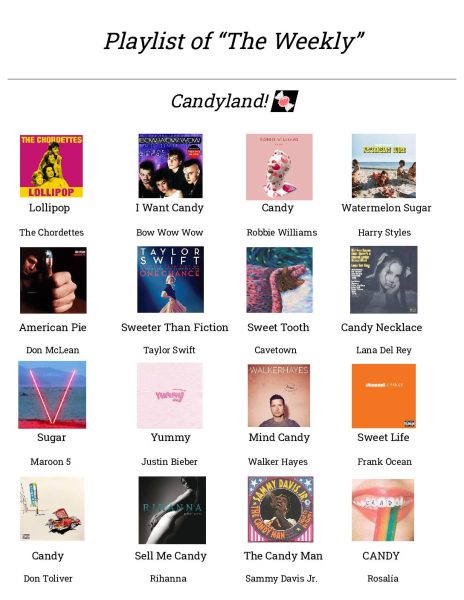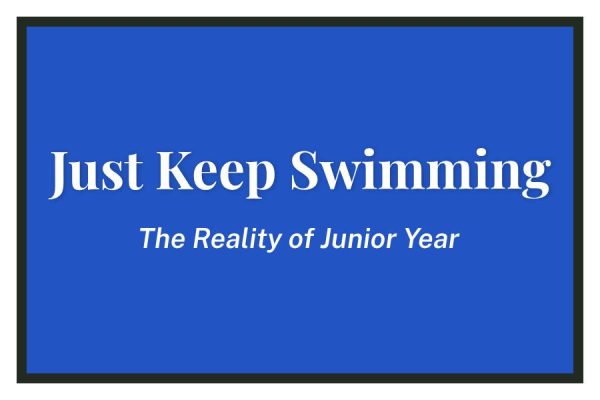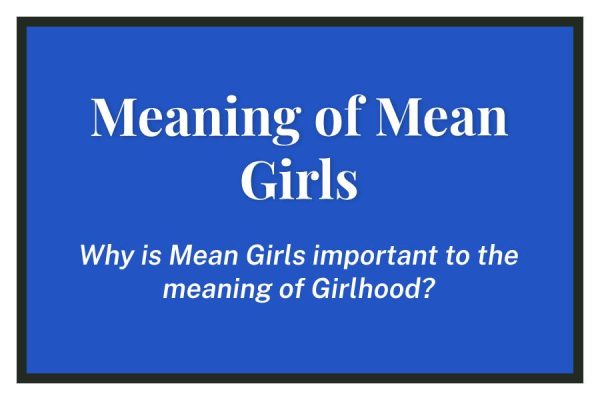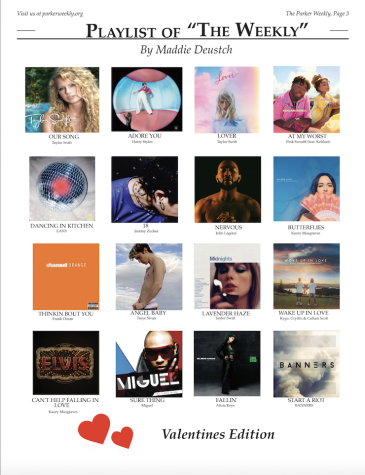Galia in wndr-Land
Science, Art, and Instagram
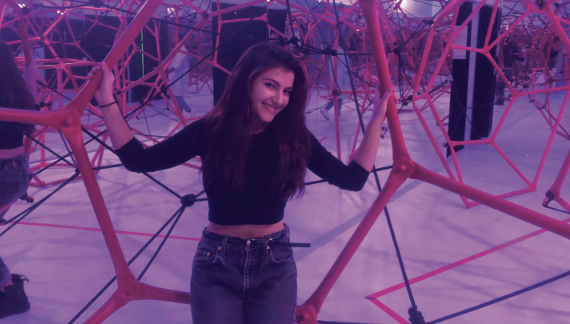
The author stands inside an artistic model of the human cytoskeleton during her visit to the wndr museum. Photo courtesy of Galia Newberger.
Upon arriving at the “wndr” museum in the West Loop, my friend Sadie Heller and I were greeted by a 20-something man in a silver, reflective, floor-length parka. “Do you guys have a reservation?” he asked calmly, seemingly oblivious to the shining beams of light reflecting off of his coat.
He was stationed at the doorway of a rather inconspicuous white building. The line of people stretching around the corner, though, made the location far from hard to spot. The museum has been hugely popular since it opened on September 21st. I told the man in the mirrored coat that we had reserved a spot, and we were ushered inside.
“Welcome to The Lobby,” a perky woman in a pale purple lab coat said as she greeted us at the door. Before we could look around, she steered Sadie and me to a massive wall of multi-colored string. “Which color is speaking to you today?” she asked, as though it should be perfectly obvious that today I am feeling utterly teal. Slightly bemused, I picked out a coral thread, which she promptly tied around my wrist.
Now, she said, we were prepared for our experience at wndr. She laid out the rules: we could mill about The Lobby as we pleased for as long as we wanted, but once we entered the exhibits, we couldn’t re-enter it. We nodded and set out about our tour.
The Lobby is a series of two rooms connected by a small staircase. It includes bowls of Sweet Tarts and Swedish Fish, chairs swinging from the ceiling, and a poet (also dressed in a purple lab coat, along with the rest of wndr’s “Ambassadors”) who will write about anything you ask her to. Lining a wall are squishy light bulb-shaped apparatuses that change to the color of whatever you hover them over and a mirror in which you can view yourself from every angle is mounted on the opposite wall.
As you walk through The Lobby, you can vote––using ping pong balls––in various polls, ranging from the mundane (Cubs or White Sox?) to the profound (reality or fantasy?), watch an artist work as he splashes pastels across a massive white canvas, and check out a full wall exhibit on the intersection of art and science. But leaving The Lobby is where the real fun begins.
Once we decided we were ready to enter the exhibits (the point of no return!) we were guided by an Ambassador to a wall of microscopes. They displayed beautiful, kaleidoscope-like images of a bizarre array of selections: pieces of onion skin dyed blue or a tiny string of cotton.
Past the wall of microscopes lay 19 rooms of exhibits––each created by a different artist––relating to wndr’s science and art theme. In one room, the walls are completely covered with tiny, reflective prisms, shining with iridescent rainbows that change as the room’s lighting shifts from green to blue to purple to pink. Some exhibits display the science side of the theme more obviously (a giant model of human DNA made out of transparent straws, a jungle-gym-like model of the human cytoskeleton), some seem more artistic (a floor that lights up where your feet hit as you walk across it) and some are just fun (a giant room full of air vents and balloons).
Finally, after exiting the maze of exhibits, you are allowed to enter wndr’s crown jewel: the Yayoi Kusama Infinity Mirror Room. It is entitled “Let’s Survive Forever” and supposedly represents Kusama’s take on human mortality.
Before entering visitors are required to remove their shoes and wait their turn: only six people are allowed in at a time. We were allotted two minutes in the room. Any more is considered overwhelming, the Ambassador manning the room’s door told us.
Once I stepped into the room, I understood why: the whole thing was mirrored. And decorated with mirrors. Mirrored balls hung from the ceiling, littered the floor, and filled a (mirrored) column in the middle. Inside the infinity room, it’s impossible to tell how big the space is, although from outside it’s clearly no larger than an average teen bedroom. It feels both endlessly expansive and constrictingly tiny. Two minutes later, I was spit back out into reality, dizzy and impressed. I promptly called my editor, asking him to write about the museum for this issue.
“Is that, like, an Instagram museum?” he asked upon my description of wndr. The term Instagram museum has recently risen to prominence in light of places like New York’s Museum of Ice Cream or Chicago’s (now closed) Happy Place. Ranging from criticism to praise, public perception of these “Instagram museums” often revolves around the question “is it art?” These museums are often judged as catering to those who crave nothing more than a photo-op with a neat background and cool lighting.
I decided to ask Carlos Pineda, a purple-lab coat wearing wndr Ambassador, what if he thought wndr qualified as an Instagram museum.“We do want to move away from the idea of a traditional art museum where you’d just be looking at something,” he said, shrugging. But is it art? “I think… I think it’s just genuinely a good time.” I have to agree.



